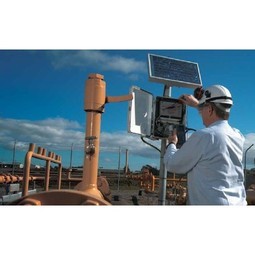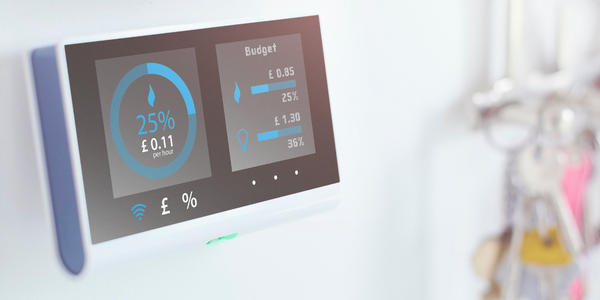公司规模
Large Corporate
地区
- America
国家
- Canada
产品
- Cognito® network detection and response platform
技术栈
- Artificial Intelligence
- Data Science
- Machine Learning
- Behavioral Analysis
实施规模
- Enterprise-wide Deployment
技术
- 网络安全和隐私 - 网络安全
适用行业
- 公用事业
适用功能
- 商业运营
用例
- 网络安全
服务
- 网络安全服务
关于客户
Hydro Ottawa 是安大略省东部最大的电力分销商。该公司负责向超过 323,000 名商业和住宅客户提供电力。作为一家公用事业公司,Hydro Ottawa 在客户的日常生活中发挥着至关重要的作用,为他们提供家庭和企业所需的电力。该公司致力于为客户提供可靠和安全的电力。然而,随着电网和公用事业供应商遭受的网络攻击越来越多,Hydro Ottawa 面临着保护其企业 IT 和关键基础设施系统免受这些威胁的挑战。
挑战
Hydro Ottawa 是安大略省东部最大的配电公司,负责向 323,000 多家企业和住宅客户提供电力。随着针对电网和公用事业提供商的攻击激增,该公司需要保护其企业 IT 和关键基础设施系统免受网络攻击。挑战在于缩小感染和检测之间的差距。该公司需要自动化威胁管理,这种管理简单易用,并且易于与其他安全工具集成。
解决方案
Hydro Ottawa 实施了 Vectra® 的 Cognito® 网络检测和响应平台。该平台使用人工智能以及数据科学、机器学习和行为分析的组合来增强安全分析师的工作。它能够可靠地检测和揭露攻击行为,即使在加密流量中也是如此。通过实时检测企业网络上的威胁,Hydro Ottawa 可以防止针对性攻击蔓延到运营网络,并消除整个地区电力分配的中断。该平台还提供对网络攻击所有阶段的可见性,揭露基本攻击行为和勒索软件、远程访问工具、隐藏和加密隧道、后门漏洞和管理凭据滥用的早期迹象。它监控物理和虚拟主机以检测入侵或内部威胁的迹象。使用监督和无监督机器学习,Cognito 可以轻松适应不断变化的网络环境,以检测未知和已知威胁。
运营影响

Case Study missing?
Start adding your own!
Register with your work email and create a new case study profile for your business.
相关案例.

Case Study
IoT Solutions for Smart City | Internet of Things Case Study
There were several challenges faced: It is challenging to build an appliance that can withstand a wide range of voltage fluctuations from as low at 90v to as high as 320v. Since the device would be installed in remote locations, its resilience was of paramount importance. The device would have to deal with poor network coverage and have the ability to store and re-transmit data if networks were not available, which is often the case in rural India. The device could store up to 30 days of data.

Case Study
Automation of the Oguz-Gabala-Baku water pipeline, Azerbaijan
The Oguz-Gabala-Baku water pipeline project dates back to plans from the 1970’s. Baku’s growth was historically driven by the booming oil industry and required the import of drinking water from outside of the city. Before the construction of the pipeline, some 60 percent of the city’s households received water for only a few hours daily. After completion of the project, 75 percent of the two million Baku residents are now served around the clock with potable water, based on World Health Organization (WHO) standards. The 262-kilometer pipeline requires no pumping station, but uses the altitude differences between the Caucasian mountains and the capital to supply 432,000 m³/d to the Ceyranbatan water reservoir. To the people of Baku, the pipeline is “the most important project not only in 2010, but of the last 20 years.”

Case Study
GPRS Mobile Network for Smart Metering
Around the world, the electricity supply industry is turning to ‘smart’ meters to lower costs, reduce emissions and improve the management of customer supplies. Smart meters collect detailed consumption information and using this feedback consumers can better understand their energy usage which in turn enables them to modify their consumption to save money and help to cut carbon emissions. A smart meter can be defined in many ways, but generally includes an element of two-way communication between the household meter and the utility provider to efficiently collect detailed energy usage data. Some implementations include consumer feedback beyond the energy bill to include online web data, SMS text messages or an information display in consumers’ premises. Providing a cost-effective, reliable communications mechanism is one of the most challenging aspects of a smart meter implementation. In New Zealand, the utilities have embraced smart metering and designed cost effective ways for it to be implemented. The New Zealand government has encouraged such a move to smart metering by ensuring the energy legislation is consistent with the delivery of benefits to the consumer while allowing innovation in this area. On the ground, AMS is a leader in the deployment of smart metering and associated services. Several of New Zealand’s energy retailers were looking for smart metering services for their residential and small business customers which will eventually account for over 500,000 meters when the multi-year national deployment program is concluded. To respond to these requirements, AMS needed to put together a solution that included data communications between each meter and the central data collection point and the solution proposed by Vodafone satisfied that requirement.

Case Study
NB-IoT connected smart meters to improve gas metering in Shenzhen
Shenzhen Gas has a large fleet of existing gas meters, which are installed in a variety of hard to reach locations, such as indoors and underground, meaning that existing communications networks have struggled to maintain connectivity with all meters. The meter success rate is low, data transmissions are so far unstable and power consumption is too high. Against this background, Shenzhen Gas, China Telecom, Huawei, and Goldcard have jointly trialed NB-IoT gas meters to try and solve some of the challenges that the industry faces with today’s smart gas meters.

Case Study
British Gas Modernizes its Operations with Innovative Smart Metering Deployment
The UK government has mandated that smart meters are rolled out as standard across Great Britain by end of 2020, and this roll-out is estimated to create £14 billion in net benefits to the UK in consumer energy savings and lower energy generation demand, according to the Oxford Economics report, “The Value of Smart Metering to Great Britain.” While smart-metering systems have been deployed in many countries, the roll-out in Great Britain is unique because it is led by energy retailers, who have responsibility for the Electricity and Gas meters. The decision to have a retailer-led roll out was made by DECC (Department of Energy and Climate Change) to improve customer experience and drive consumer benefits. It has also led to some unique system-level requirements to support the unique local regulatory model.

Case Study
OneWireless Enabled Performance Guarantee Test
Tata Power's power generation equipment OEMs (M/s BHEL) is required to provide all of the instrumentation and measurement devices for conducting performance guarantee and performance evaluation tests. M/s BHEL faced a number of specific challenges in conducting PG tests: employing high-accuracy digital communications for instrumentation, shortening setup and dismantling time, reducing hardware required, making portable instrument setup, avoiding temporary cabling work and the material waste costs







